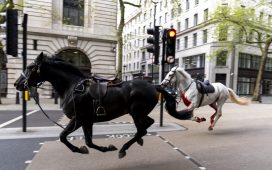The African elephant
African elephants play a key role in shaping landscapes, dispersing seeds and providing other species with access to water. Though several populations already receive protection from trade, those in Botswana, Namibia, South Africa and Zimbabwe are currently excluded from the Conference on International Trade in Endangered Species (Cites) appendix I, which offers the greatest level of protection. This month’s conference should see all African elephants added to the list.

The smooth-coated otter
Previously common in the wetlands of south and south-east Asia, the smooth-coated otter population has declined by more than 30% in the last three decades and is now facing extinction. Otters are important indicators of the health of aquatic environments; however, loss of habitat, contact with people and fisheries, the pet trade and the international trade in otter skins have put the species at risk.

The hump-snout lizard
Regarded as Sri Lanka’s most attractive lizard, the hump-snout is classified as vulnerable on the country’s red list. Sri Lanka already prohibits its hunting, capture or export, but the hump-snout lizard has become increasingly popular in Japanese, European and American pet markets.

The pancake tortoise
This tortoise is at high risk of extinction by virtue of its extremely rigid habitat and fragmented populations. Commercial collectors particularly prize them for their flat and flexible shells. It’s reported that more than 40,000 live animals have been exported over the last 20 years.

Swallowtail butterfly
As important pollinators of riverside plants, Brazil’s categorisation of this butterfly as critically endangered is a cause for concern. Illegal trade is a primary reason for its population decline. Inclusion on appendix I would reduce the pressure on this species.








